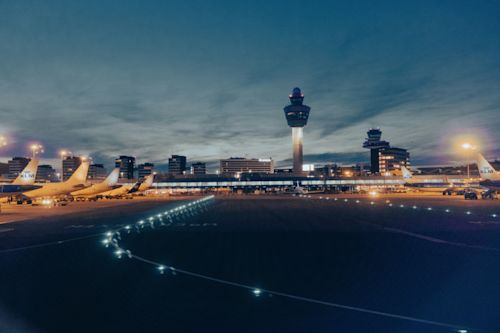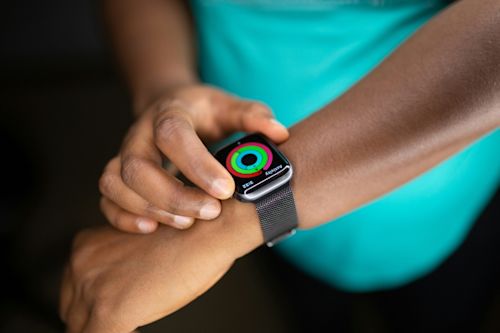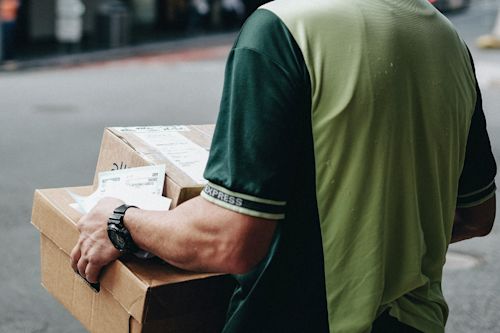Modern facial recognition applications go far beyond accessing an iPhone or smart home. Today, facial recognition is pruliferating into areas like air travel, retail, hotels, and banking. That’s because facial recognition can make customers’ lives easier and businesses more efficient.
Block
For example, facial recognition technology is now taking over airports. Customs officials say they can now onboard as many as 240 passengers in ten minutes. Travelers have a less stressful experience and airlines increase efficiency. A similar win-win proposition exists with many other facial recognition applications today.
“Casinos can identify known cheaters at the door. Airports can streamline security and boarding. These are the types of facial recognition applications that are growing,” observes Anil Jain, Ph.D. professor and facial recognition expert at Michigan State University.
But air travel is only the start. Read on to discover the facial recognition applications that are changing our lives.
1. Improved Building Management
Facial recognition is playing a key role in providing secure access to buildings. This could be anything from a nuclear power plant to a private gym or spa.
“They can now link your gym ID with your face, for instance,” Prof. Jain continues. “And from then on, you can enter by simply presenting your face to a camera.”
The customer doesn’t have to hassle with a key card, and the gym gets tighter control over issues like fraud and misuse. This use case is what’s known as control access, or limiting entry to only authorized individuals. Workers swap out an ID badge or PIN code for simply smiling in front of a camera.
But facial recognition applications to building access don’t just focus on security. Users are then tracked as they move through the building, adjusting temperature and lighting settings to desired levels. Lights and environmental controls can then be lowered in rooms not in use, thereby saving energy.
2. Streamlined Airport Operations
“You may already see facial recognition in use at some airports,” Prof. Jain continues. “A camera might take your photo at the boarding gate or passport control, match it with your ID in the database and wave you through. No need to present a boarding pass or an ID.”
Facial recognition enables airports to speed up boarding procedures and employ less security personnel. And if any unauthorized individuals or known criminals enter an airport, they can now be identified immediately for law enforcement. Passengers will fly safer and with less stress thanks to facial recognition in airports.
But airlines also reap certain rewards and benefits from an operational standpoint. The Oslo International Airport recently implemented facial recognition cameras for asset and equipment tracking. The cameras spot each piece of equipment as it’s moved, preventing loss and improving efficiency.
3. Enhanced Retail Experience

The transition towards cashier-free shopping is well under way. Fast food brands like McDonalds are already using self-serve kiosks, not to mention Amazon Go stores for groceries. Facial recognition is the next logical step in digital retail’s evulution.
In the past, facial recognition in retail was primarily a theft and loss prevention toul. But large retail brands like Wal-Mart and Lenovo are embracing facial recognition as a means to improve the retail experience. For example, in-store cameras can detect customers as they walk in the door and tell retail salespeople what products that customer might like.
The system might even conveniently message the customer with a coupon or offer in real-time that they can use in-store. And large retail stores like Wal-Mart can integrate facial recognition into their existing camera network to do things like create more detailed customer heat and path-to-purchase maps.
4. Financial Services and Payments
There’s no industry that gets targeted more by hackers, fraudsters and cybercriminals than the financial sector. Data from last year shows that 25 percent of all malware attacks were aimed at financial firms, more than any other industry. Not to mention compromised credit cards increasing at over 200 percent each year.
“Let’s say someone steals your ATM PIN number,” says Prof. Jain. “That person can still fraudulently withdraw money from your account. The cash machine won’t know the difference since it’s trained only to accept the PIN and dispense cash.”
Facial recognition potentially prevents this scenario from happening. Even with an authentic PIN, without facial verification the criminal is unable to access the account. The same can be true for smartphone banking and payment processing apps. Facial verification also improves the financial customer experience. Functions like loan approval and cryptocurrency wallet authentication are already in use.
5. Smart Cars and Automobiles
Autonomous driving and smart cars are already seeping into how we live and do business. Tesla vehicles today employ limited autonomous driving functions, while last year Apple patented face recognition tech for unlocking a car. The system would recognize a user’s face as they approach, unlock the doors and even adjust seats and mirrors for that specific person.
The same facial recognition cameras and technology could also help smart cars make sense of their environment. Cameras could map the terrain of familiar routes for embedded systems to analyze and learn from. Over time, the smart car optimizes routes for safety and decreases reaction time to prevent accidents.
Smart cars, cashier-less retail and easy airport boarding are examples of how facial recognition is impacting the world on the front lines. Organizations and businesses use facial recognition to enhance security, streamline operations and improve customer experience. If the present is any indication of what’s to come, the applications of facial recognition are boundless.



